#scorpion venom farm
Explore tagged Tumblr posts
Text
Round 1 - Phylum Arthropoda
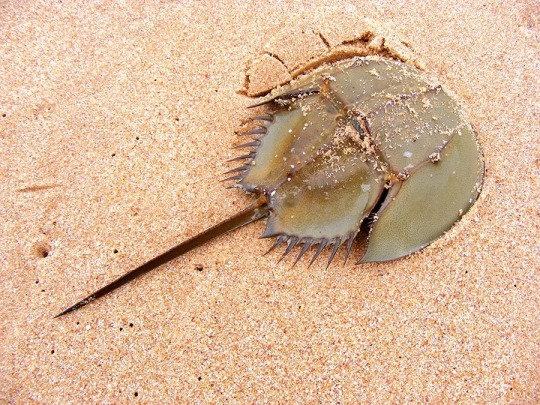



(Sources - 1, 2, 3, 4)
Arthropoda is a phylum of animals that have segmented bodies, possess a chitin exoskeleton, and have paired segmented appendages. They are colloquially called “bugs” though this is often only used for terrestrial arthropods, and sometimes only used for insects specifically.
After Nematoda, this is the most successful phylum, and it is far more diverse, with up to 10 million species! Arthropods account for 80% of all known living animal species. The three major subphyla include the Chelicerates (sea spiders, horseshoe crabs, arachnids, and the extinct eurypterids and chasmataspidids), the Myriapods (centipedes and millipedes), and the Crustaceans (shrimps, prawns, crabs, lobsters, crayfish, seed shrimp, branchiopods, fish lice, krill, remipedes, isopods, barnacles, copepods, opossum shrimps, amphipods, mantis shrimp, entognaths, and insects).
Arthropods are so diverse in fact that it is next to impossible for me to describe a model arthropod. They are important members of marine, freshwater, land, and air ecosystems and are one of only two major animal groups that have adapted to life in dry environments, the others being chordates. All arthropods have an exoskeleton and must molt as they grow, replacing their exoskeleton. Some arthropods go through a metamorphosis in this process. They have brains, a heart, and blood (called hemolymph, though some crustaceans and insects also use hemoglobin). They sense the world through small hairs called setae which are sensitive to vibration, air currents, and even chemicles in the air or water. Pressure sensors function similarly to eardrums. Antennae monitor humidity, moisture, temperature, sound, smell, and/or taste, depending on species. Most arthropods have sophisticated visual systems ranging from simple eyes (ocelli) which orient towards light, to compound eyes consisting of fifteen to several thousand independent ommatidia capable of forming images, detecting fast movement, or even seeing polarized or ultra-violet light. Some arthropods are hermaphroditic, some have more than two sexes, some reproduce by parthenogenesis, some by internal fertilization, some by external, some have complex courtship rituals, some lay eggs, some give live birth, some have prolonged maternal care. The first arthropods are known from the Ediacaran, before the Cambrian era.
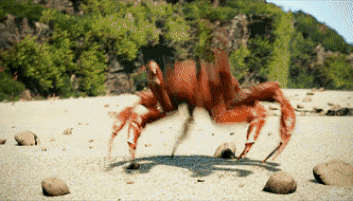
Propaganda below the cut:
Insects are the first animals to have achieved flight
The smallest arthropods are the parasitic crustaceans of the class Tantulocarida, some of which are less than 100 micrometres long. The largest arthropod is the Japanese Spider Crab (Macrocheira kaempferi) with a legspan of up to 4 metres (13 ft) long. The heaviest is the American Lobster (Homarus americanus), which can get up to 20 kilograms (44 lb).
Many arthropods are popular pets, including various species of crab, shrimp, isopod, crayfish, mantis shrimp, millipede, centipede, tarantula, true spider, scorpion, amblypygid, vinegaroon, mantis, cockroach, beetle, moth, and ant! Some are even domesticated, including silk moths and honeybees.
Many arthropods are eaten by humans as a delicacy, and farming insects for food is considered more sustainable than farming large chordates. These farmed arthropods are referred to as “minilivestock.”
Arthropods feature in a variety of ways in biomimicry: humans imitating elements of nature. For example, the cooling system of termite mounds has been imitated in architecture, and the internal structure of the dactyl clubs of mantis shrimp have been imitated to create more damage tolerant materials.
Spider venoms are being studied as a less harmful alternative to chemical pesticides, as they are deadly to insects but the great majority are harmless to vertebrates. They have also been studied and could have uses in treating cardiac arrhythmia, muscular dystrophy, glioma, Alzheimer's disease, strokes, and erectile dysfunction.
Shellac is a resin secreted by the female Lac Bug (Kerria lacca) on trees in the forests of India and Thailand. It is used as a brush-on colorant, food glaze, natural primer, sanding sealant, tannin-blocker, odour-blocker, stain, and high-gloss varnish. It was once used in electrical applications as an insulator, and was used to make phonograph and gramophone records until it was replaced by vinyl.
One of the biggest ecosystem services arthropods provide for humans is pollination. Crops where pollinator insects are essential include brazil nuts, cocoa beans, and fruits including kiwi, melons, and pumpkins. Crops where pollinator insects provide 40-90% of pollination include avocados, nuts like cashews and almonds, and fruits like apples, apricots, blueberries, cherries, mangoes, peaches, plums, pears, and raspberries. In crops where pollinators are not essential they still increase production and yield. Important pollinators include bees, flies, wasps, butterflies, and moths.
Many arthropods are sacred to humans. In Ancient Egypt, scarab beetles were used in art, religious ceremonies, and funerary practices, and were represented by the god Khepri. Bees supposedly grew from the tears of the sun god Ra, spilled across the desert sand. The goddess of healing venomous bites and stings, Serket, was depicted as a scorpion. Kalahari Desert's San People tell of a legendary hero, Mantis, who asked a bee to guide him to find the purpose of life. When the bee became weary from their search, he left the mantis on a floating flower, and planted a seed within him before passing from his exhaustion. The first human was born from this seed. In Akan folklore, the cunning trickster figure Anansi/Ananse is depicted as a spider. Western astrology uses the crab constellation, called Cancer, and the scorpion constellation, called Scorpio. Dragonflies symbolize pure water in Navajo tradition. In Anishinaabe culture, dreamcatchers are meant to represent spiderwebs and are used as a protective charm for infants. They originate from the Spider Grandmother, who takes care of the children and the people of the land in many Native American cultures. The Moche people of ancient Peru often depicted spiders and crabs in their art. In an Ancient Greek hymn, Eos, the goddess of the dawn, requests of Zeus to let her lover Tithonus live forever as an immortal. Tithonus became immortal, but not ageless, and eventually became so small, old, and shriveled that he turned into the first cicada. Another hymn sings of the Thriae, a trinity of Aegean bee nymphs. Native Athenians wore golden grasshopper brooches to symbolize that they were of pure, Athenian lineage. In an Ancient Sumerian poem, a fly helps the goddess Inanna when her husband Dumuzid is being chased by galla demons. In Japanese culture, butterflies carry many meanings, from being the souls of humans to symbols of youth to guides into the afterlife. Ancient Romans also believed that butterflies were the souls of the dead. Some of the Nagas of Manipur claim ancestry from a butterfly. Many cultures use the butterfly as a symbol of rebirth. And the list goes on…
cute crab eat a strawbebby:
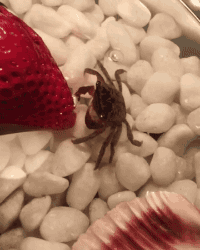
#round 1#animal polls#listen narrowing it down to just 4 images almost killed me#if arthropods don’t move on to round 2 I will have to take like an extra week off to mourn that I can’t show you all the cool bugs#there’s so many cool bugs guys#i chose the orchid mantis over a trilobite beetle and a poofy little bee fly cause I figured it had broader appeal#and used a horseshoe crab instead of a spider cause people are so Weird about spiders I worried it would impact the numbers#sigh#anyway I’m really hoping for Chordata Arthropoda Mollusca as top three#other phyla are all great but these three would make for the most interesting Round 2 imo
240 notes
·
View notes
Text
Demon Lord, Aldinach

Image © Paizo Publishing
[Sponsored by @vonbaghager . While doing my research for this entry, I noticed something interesting. Aldinach and Areshkagal are enemies in Pathfinder. Aldinach is the name of an Egyptian demon, but looks like a Mesopotamian scorpion-man, whereas Areshkagal gets her name from the Sumerian Ereshkigal but looks like an Egyptian sphinx. Maybe that's why they hate each other.]
Demon Lord, Aldinach CR 28 CE Outsider (extraplanar)
This creature is a golden scorpion the size of a house, except that her head is that of a bald, fanged human woman. Her claws are enormous, made out of blood-red crystal. A mass of seething scorpions crawls along her back and sides.
Aldinach, She of Six Venoms, Lord of Scorpions CE female demon lord of sand, scorpions and thirst Domains Animal, Chaos, Evil, Sun Subdomains Demon, Feather, Fur, Light Favored Weapon kukri Unholy Symbol gold scorpion with sand dripping from its claws Worshipers girtabilus, chaotic phaerimm, torturers Minions fiendish earth elementals, giant scorpions For information on Aldinach’s obedience and boons, see the Book of the Damned
Aldinach is the demon lord of sand, scorpions and thirst. She rules the Sea of Whispering Sands, a layer of nearly infinite deserts she stole from her sister Areshkagal. and continues to defend it from Areshkagal’s servitors. Aldinach has the infinite patience of an ambush predator, and the persistence of the constant erosion created by a sandstorm. She believes that she will outlast the Faceless Sphinx and maintain her rule through sheer tenacity. That Areshkagal has yet to give up is a source of frustration, but not an insurmountable one, and the two demon lords continue to clash in proxy wars via their cults and servitors.
Aldinach usually opens any confrontation by summoning a supernaturally deadly sandstorm. Anyone who resists being immediately flensed is then met in direct combat. She of Six Venoms, as the title suggests, is a master of poisons. Her venom and any created by a spell she casts ignores almost all immunity to poison, and she can tailor the effects of her venom in order to ruin the bodies and minds of her enemies. The infinite swarm of scorpions clinging to her is an extension of her body, and quickly shred and envenom anyone who dares to strike her.
Aldinach’s worshipers tend to be as determined and patient as the Lord of Scorpions herself. The tortures of Aldinach include envenomation and thirst, neither of which are typically fast deaths, and cultists will repeatedly heal their victims and give them just enough water to live, extending the torment to weeks or months. One of Aldinach’s goals is the expansion of deserts, the better to create hard, dangerous environments to breed hard, dangerous souls. Some of her subtlest worshipers masquerade as aqueduct engineers or farming specialists, claiming to be able to eke more out of lean land but in reality spreading the desert.
Aldinach CR 28 XP 4,915,200 CE Colossal outsider (chaos, demon, evil, extraplanar) Init +11; Senses darkvision 60 ft., detect chaos, detect evil, Perception +45, tremorsense 120 ft., true seeing Aura unholy (DC 28)
Defense AC 46, touch 13, flat-footed 39 (-8 size, +7 Dex, +33 natural, +4 deflection) hp 676(33d10+495); regeneration 30 (deific or mythic) Fort +30, Ref +31, Will +31 DR 20/cold iron, epic, and good; Immune ability damage, ability drain, charm effects, compulsion effects, cold, death effects, electricity, energy drain, petrification, and poison; Resist acid 30, cold 30, fire 30; SR 39 Defensive Abilities Abyssal resurrection, freedom of movement, swarm skin
Offense Speed 80 ft., climb 40 ft., burrow 40 ft. Melee sting +42 (2d8+17 plus poison), 2 claws +42 (4d6+17/17-20 x3 plus grab) Space 30 ft.; Reach 30 ft. Special Attacks command vermin, constrict (claw, 4d6+25), crystalline claws, flensing storm, rend (2 claws, 4d6+25), she of six venoms, sneak attack +4d6, swift sting Spell-like Abilities CL 27th, concentration +37 Constant—detect chaos, detect evil, freedom of movement, speak with vermin, true seeing, unholy aura (self only) At will—air walk, blasphemy* (DC 27), cup of dust* (DC 23), cloudkill* (DC 25), greater dispel magic, greater teleport, overwhelming poison (DC 26), sunbeam* (DC 27), unhallow, unholy blight* (DC 24) 3/day—control weather*, empowered horrid wilting (DC 28), quickened sirocco (DC 26), summon demons and scorpions, sunburst (DC 28) 1/day—dominate monster (DC 29), power word kill*, sea of dust * Aldinach can use the mythic version of this spell in her domain
Statistics Str 45, Dex 24, Con 40, Int 28, Wis 29, Cha 31 Base Atk +33; CMB +58 (+62 grapple); CMD 68 (80 vs. trip) Feats Blind Fight, Combat Reflexes, Critical Focus, Empower SLA (horrid wilting), Exhausting Critical, Fatiguing Critical, Greater Vital Strike, Improved Critical (claw), Improved Initiative, Improved Vital Strike, Lightning Reflexes, Nimble Moves, Power Attack, Quicken SLA (sirocco), Skill Focus (Stealth), Stand Still, Vital Strike Skills Bluff +46, Climb +58, Heal +42, Intimidate +46, Knowledge (arcana, dungeoneering, religion) +42, Knowledge (geography, planes) +45, Perception +45, Sense Motive +45, Spellcraft +42, Stealth +41, Survival +45, Use Magic Device +43; Racial Modifiers +8 Stealth Languages Abyssal, Celestial, Draconic, Infernal, speak with vermin, telepathy 300 ft. SQ demon lord traits
Ecology Environment any deserts (The Abyss) Organization unique Treasure triple standard
Special Abilities Command Vermin (Su) Aldinach can command creatures of the vermin type to do her bidding as a move action, either via using his ability to speak with vermin or via telepathy. This affects vermin within 300 feet (Will DC 36 negates). This functions like mass suggestion, but can affect mindless creatures. Aldinach can suggest obviously harmful or suicidal acts (though non-mindless creatures gain a +10 bonus on their saving throws against these suggestions). The commanded course of activity can have a duration of up to 1 hour. If Aldinach issues a new command to a creature, the previous command is discarded. Once a creature succeeds at its save against this effect, it is immune to further commands from Aldinach for 24 hours. The save DC is Charisma-based. Crystalline Claws (Ex) Aldinach’s claw attacks threaten a critical hit on a roll of 19-20, and deals x3 damage on a successful critical hit. Flensing Storm (Su) As a standard action, Aldinach can conjure a supernatural sandstorm at a range of up to 300 feet. The storm fills a sphere in a 40 foot radius, blocking vision as a fog cloud, and dealing 10d6 points of slashing damage and 1d4 Constitution damage a round. A successful DC 36 Reflex save negates the Constitution damage and halves the slashing damage. As a move action, Aldinach can move the storm up to 60 feet. Aldinach can see through her own flensing storms without penalty. A flensing storm can only be dispersed with wind of hurricane force or stronger, and lasts for 2 minutes. Aldinach can use this ability at will, but can only have one flensing storm in existence at a time. The save DC is Charisma based. Poison (Ex) Sting or swarm skin—injury; save Fort DC 41; duration 1/round for 6 rounds; damage 2d4 Str, Dex, Int, Wis or Cha damage or 1d6 Con damage; cure 3 consecutive saves. The save DC is Constitution based. She of Six Venoms (Su) Aldinach can change what ability score her poison deals damage to as an immediate action. She can change the ability damage for her swarm skin ability separately. Any poison damage dealt by Aldinach ignores all poison immunity except from a mythic source. Speak with Vermin (Sp) This functions as speak with animals, except that Aldinach can communicate with creatures of the vermin type. Summon Demons and Scorpions (Sp) When Aldinach uses her summon demons ability, she may also summon giant scorpions of any size with the demonic vermin or half-fiend templates. Swarm Skin (Su) Any creature that touches Aldinach with a melee weapon, natural weapon, touch attack or unarmed strike must succeed a DC 33 Reflex save or take 5d6 points of slashing and piercing damage and be exposed to her poison. Manufactured weapons with the reach property do not endanger their wielder in this way. The save DC is Dexterity based. Swift Sting (Ex) Aldinach can make a single sting attack as a swift action. This is in addition to all of the attacks she makes as a full attack action.
71 notes
·
View notes
Text
List of Mesopotamian deities✨
Mesopotamian legendary beasts ✨
☆Battle Bison beast - one of the creatures slain by Ninurta
☆The eleven mythical monsters created by Tiāmat in the Epic of Creation, Enûma Eliš:
☆Bašmu, “Venomous Snake”
☆Ušumgallu, “Great Dragon”
☆Mušmaḫḫū, “Exalted Serpent”
☆Mušḫuššu, “Furious Snake”
☆Laḫmu, the “Hairy One”
☆Ugallu, the “Big Weather-Beast”
☆Uridimmu, “Mad Lion”
☆Girtablullû, “Scorpion-Man”
☆Umū dabrūtu, “Violent Storms”
☆Kulullû, “Fish-Man”
☆Kusarikku, “Bull-Man”
Mesopotamian Spirits and demons ✨
☆Alû, demon of night
☆Asag - monstrous demon whose presence makes fish boil alive in the rivers
☆Asakku, evil demon(s)
☆The edimmu - ghosts of those who were not buried properly
☆Gallû, underworld demon
☆Hanbi or Hanpa - father of Pazuzu
☆Humbaba - guardian of the Cedar Forest
☆Lamashtu - a malevolent being who menaced women during childbirth
☆Lilû, wandering demon
☆Mukīl rēš lemutti demon of headaches
☆Pazuzu - king of the demons of the wind; he also represented the southwestern wind, the bearer of storms and drought
☆Rabisu - an evil vampiric spirit
☆Šulak the bathroom demon, “lurker” in the bathroom
☆Zu - divine storm-bird and the personification of the southern wind and the thunder clouds
Mesopotamian Demigods and Heroes ✨
☆Adapa - a hero who unknowingly refused the gift of immortality
☆The Apkallu - seven demigods created by the god Enki to give civilization to mankind ☆Gilgamesh - hero and king of Uruk; central character in the Epic of Gilgamesh
☆Enkidu - hero and companion of Gilgamesh
☆Enmerkar - the legendary builder of the city of Uruk
☆Lugalbanda - second king of Uruk, who ruled for 1,200 years
☆Utnapishtim - hero who survived a great flood and was granted immortality; character in the Epic of Gilgamesh
Mesopotamian Primordial beings✨
☆Abzu - the Ocean Below, the name for fresh water from underground aquifers; depicted as a deity only in the Babylonian creation epic Enûma Eliš
☆Anshar - god of the sky and male principle
☆Kishar - goddess of the earth and female principle
☆Kur - the first dragon, born of Abzu and Ma. Also Kur-gal, or Ki-gal the underworld
☆Lahamu - first-born daughter of Abzu and Tiamat
☆Lahmu - first-born son of Abzu and Tiamat; a protective and beneficent deity
☆Ma -primordial goddess of the earth
☆Mummu - god of crafts and technical skill
☆Tiamat - primordial goddess of the ocean
Mesopotamian Minor deities✨
This is only some of them. There are thousands.
Abu - a minor god of vegetation
Ama-arhus - Akkadian fertility goddess; later merged into Ninhursag
Amasagnul - Akkadian fertility goddess
Amurru - god of the Amorite people
An - a goddess, possibly the female principle of Anu
Arah - the goddess of fate.
Asaruludu or Namshub - a protective deity
Ashnan - goddess of grain
Aya - a mother goddess and consort of Shamash
Azimua - a minor Sumerian goddess
Bau - dog-headed patron goddess of Lagash
Belet-Seri - recorder of the dead entering the underworld
Birdu - an underworld god; consort of Manungal and later syncretized with Nergal
Bunene - divine charioteer of Shamash
Damgalnuna - mother of Marduk
Damu - god of vegetation and rebirth; possibly a local offshoot of Dumuzi
Emesh - god of vegetation, created to take responsibility on earth for woods, fields, sheep folds, and stables
Enbilulu - god of rivers, canals, irrigation and farming
Endursaga - a herald god
Enkimdu - god of farming, canals and ditches
Enmesarra - an underworld god of the law, equated with Nergal
Ennugi - attendant and throne-bearer of Enlil
Enshag - a minor deity born to relieve the illness of Enki
Enten - god of vegetation, created to take responsibility on earth for the fertility of ewes, goats, cows, donkeys, birds
Erra - Akkadian god of mayhem and pestilence
Gaga - a minor deity featured in the Enûma Eliš
Gatumdag - a fertility goddess and tutelary mother goddess of Lagash
Geshtinanna - Sumerian goddess of wine and cold seasons, sister to Dumuzid
Geshtu-E - minor god of intelligence
Gibil or Gerra - god of fire
Gugalanna - the Great Bull of Heaven, the constellation Taurus and the first husband of Ereshkigal
Gunara - a minor god of uncertain status
Hahanu - a minor god of uncertain status
Hani - an attendant of the storm god Adad
Hayasum - a minor god of uncertain status
Hegir-Nuna - a daughter of the goddess Bau
Hendursaga - god of law
Ilabrat - attendant and minister of state to Anu
Ishum - brother of Shamash and attendant of Erra
Isimud - two-faced messenger of Enki
Ištaran - god of the city of Der (Sumer)
Kabta - obscure god “Lofty one of heaven”
Kakka - attendant and minister of state to both Anu and Anshar
Kingu - consort of Tiamat; killed by Marduk, who used his blood to create mankind
Kubaba - tutelary goddess of the city of Carchemish
Kulla - god of bricks and building
Kus (god) - god of herdsmen
Lahar - god of cattle
Lugal-Irra - possibly a minor variation of Erra
Lulal - the younger son of Inanna; patron god of Bad-tibira
Mamitu - Sumerian goddess of fate
Manungal - an underworld goddess; consort of Birdu
Mandanu -god of divine judgment
Muati - obscure Sumerian god who became syncretized with Nabu
Mushdamma - god of buildings and foundations
Nammu - a creation goddess
Nanaya - goddess personifying voluptuousness and sensuality
Nazi - a minor deity born to relieve the illness of Enki
Negun - a minor goddess of uncertain status
Neti - a minor underworld god; the chief gatekeeper of the netherworld and the servant of Ereshkigal
Nibhaz - god of the Avim
Nidaba - goddess of writing, learning and the harvest
Namtar - minister of Ereshkigal
Nin-Ildu - god of carpenters
Nin-imma - goddess of the female sex organs
Ninazu - god of the underworld and healing
Nindub - god associated with the city Lagash
Ningal - goddess of reeds and consort of Nanna (Sin)
Ningikuga - goddess of reeds and marshes
Ningirama - god of magic and protector against snakes
Ningishzida - god of the vegetation and underworld
Ninkarnunna - god of barbers
Ninkasi - goddess of beer
Ninkilim - "Lord Rodent" god of vermin
Ninkurra - minor mother goddess
Ninmena - Sumerian mother goddess who became syncretized with Ninhursag
Ninsar - goddess of plants
Ninshubur - Sumerian messenger goddess and second-in-command to Inanna, later adapted by the Akkadians as the male god Papsukkal
Ninsun - "Lady Wild Cow"; mother of Gilgamesh
Ninsutu - a minor deity born to relieve the illness of Enki
Nintinugga - Babylonian goddess of healing
Nintulla - a minor deity born to relieve the illness of Enki
Nu Mus Da - patron god of the lost city of Kazallu
Nunbarsegunu - goddess of barley
Nusku - god of light and fire
Pabilsaĝ - tutelary god of the city of Isin
Pap-nigin-gara - Akkadian and Babylonian god of war, syncretized with Ninurta
Pazuzu - son of Hanbi, and king of the demons of the wind
Sarpanit - mother goddess and consort of Marduk
The Sebitti - a group of minor war gods
Shakka - patron god of herdsmen
Shala - goddess of war and grain
Shara - minor god of war and a son of Inanna
Sharra Itu - Sumerian fertility goddess
Shul-pa-e - astral and fertility god associated with the planet Jupiter
Shul-utula - personal deity to Entemena, king of the city of Eninnu
Shullat - minor god and attendant of Shamash
Shulmanu - god of the underworld, fertility and war
Shulsaga - astral goddess
Sirara - goddess of the Persian Gulf
Siris - goddess of beer
Sirsir - god of mariners and boatmen
Sirtir - goddess of sheep
Sumugan - god of the river plains
Tashmetum - consort of Nabu
Tishpak - tutelary god of the city of Eshnunna
Tutu - tutelary god of the city of Borsippa
Ua-Ildak - goddess responsible for pastures and poplar trees
Ukur - a god of the underworld
Uttu - goddess of weaving and clothing
Wer - a storm god linked to Adad
Zaqar - messenger of Sin who relays communication through dreams and nightmares
Mesopotamian Major Deities✨
Hadad (or Adad) - storm and rain god
Enlil (or Ashur) - god of air, head of the Assyrian and Sumerian pantheon
Anu (or An) - god of heaven and the sky, lord of constellations, and father of the gods
Dagon (or Dagan) - god of fertility
Enki (or Ea) - god of the Abzu, crafts, water, intelligence, mischief and creation and divine ruler of the Earth and its humans
Ereshkigal - goddess of Irkalla, the Underworld
Inanna (later known as Ishtar) - goddess of fertility, love, and war
Marduk - patron deity of Babylon who eventually became regarded as the head of the Babylonian pantheon
Nabu - god of wisdom and writing
Nanshe - goddess of prophecy, fertility and fish
Nergal - god of plague, war, and the sun in its destructive capacity; later husband of Ereshkigal
Ninhursag (or Mami, Belet-Ili, Ki, Ninmah, Nintu, or Aruru) - earth and mother goddess
Ninlil - goddess of the air; consort of Enlil
Ninurta - champion of the gods, the epitome of youthful vigor, and god of agriculture
Shamash (or Utu) - god of the sun, arbiter of justice and patron of travelers
Sin (or Nanna) - god of the moon
Tammuz (or Dumuzid) - god of food and vegetation
15 notes
·
View notes
Text
FantasyFQ AU
I've been bored in my classes so I decided to just sit down and make something so like- Here's this thing lol.
-Roughly based in the Dark Ages (Early Mediaeval times), but with the fun little added addition of a touch of ✨m a g i c✨
-Yes, I have an obsession with Fenqing. No, I will not be shutting up about them. Yes, those two idiots are a central part of this AU. Yes, I also have an unhealthy obsession with He Xuan.
Humans:
Feng Xin - He was a royal beast tamer/slayer from the fallen Xianle monarchy, who now just wanders the lands in search of the creature that destroyed his kingdom. Over the years, he has encountered Mu Qing multiple times, but he doesn’t really understand why. He also thinks he’s being followed by an unnaturally large black cat, but he really doesn’t mind its company, and he has nicknamed the little creature “Fu Yao”.
Ling Wen - A scholar and mage living in a coastal merchant town who gains most of her income through dealing with literally everyone’s paperwork and taxes.
Qi Rong - He used to be the irritating younger prince of the Xianle monarchy, who now rules over his own little hidden town of lesser demons.
Quan Yizhen - A wandering beast slayer searching for his old teacher, who has just a touch of the tisms, but really, who doesn’t?
Shi Qingxuan - They are a young noble from a kingdom in the south, who has been cast from their kingdom due to the actions of their deceased brother and now lives in the streets of a small town nearby. They hate seafood of any kind.
“Ming Yi” - A reclusive beast tamer that prefers to live near the coast and specialises in creatures from the caverns, who has ties to the royal family and commonly attends the banquets purely for the food lol.
Pei Ming - A beast slayer from the same town as Ling Wen known both for his flirtatious attitude and his impressive feats.
Ban Yue - She’s a young beast tamer, but she is surprisingly skilled for her age, already having tamed a whole den of lethally venomous scorpion snakes.
Lang Qianqiu - The only remaining descendant of the Yong’an monarchy, but as of yet, he has ruled over the kingdom quite fairly.
Xiao Mengyou (Little guy!!!!!!) - He’s Lang Qianqiu’s best friend and the royal mage of Yong’an.
Creatures:
He Xuan - Very few people have ever seen him, but the few witness accounts say that he is a siren of sorts with black octopus tentacles instead of a fish tail. He rules over the waters in the south, where his bone dragons sink every ship that tries to sail, earning the area the name of the Black Water Demon Lair. He seems to still have some feelings of attachments to Shi Qingxuan, but has yet to act on them.
Hua Cheng - An infamous fox spirit known for his unpredictable behaviour, mysterious past, and his rule over the massive beast den known as the Ghost City. He usually stays in his foxlike form, and very few have seen his human form.
Yin Yu - A ghoul serving under Hua Cheng who was once Quan Yizhen’s teacher, but he accidentally caused the deaths of many during an accident with a dangerous beast, so he was banished and later on, killed.
Yushi Huang - She’s probably the most chill faerie you’ll ever meet, who lives in a large farming town in the north and blesses their crops. She can and will beat you up if necessary.
Bai Wuxiang - An ancient white dragon known for destroying kingdoms and sending mysterious plagues into cities, wiping out large populations of people in a single sweep. He has been missing for years now, but people theorise that he is simply resting in the northern mountains.
E-Ming - An infamous lesser spirit possessing a large silver longsword, which is tied to Hua Cheng and is by his side almost constantly.
Ruoye - A lesser spirit possessing a long silk band, which has a rather playful attitude when it’s around Xie Lian.
Who knows what they are at this point:
Mu Qing - He was born human, but most (everyone except Feng Xin and Xie Lian) do not consider him to be one anymore due to his curse that causes him to have catlike features and an alternate form of a large black cat with a white spot on its chest. He follows Feng Xin around out of curiosity, but he refuses to admit that he’s actually following him.
Xie Lian - We’re pretty sure he’s a human, but his eyes reflect light like a cat’s, and he’s practically poisonous from all of the weird stuff that he eats, so he’s just the neighbourhood cryptid at this point. He lives near Shi Qingxuan, residing in a small village a short distance south of them, and he used to be the crown prince of the Xianle Kingdom.
13 notes
·
View notes
Text

DOGS OF LOOMING GAIA
(This is not a complete list of dog breeds, just some of the most notable ones for now. I may add more in the future.)
--
OGRE DOG
Place of Origin: Redsnake Canyons, Wokina
This is the only dog breed on Looming Gaia which was not domesticated by humans, but by ogres. They naturally look to ogres as their masters and ignore human commands. The ogrish Crimsat tribe bred them to kill snakes, scorpions, and other venomous vermin that threatened their children. Ogre dogs are well-suited for the job, using their small size to raid pest burrows.
They have a knack for killing prey without getting bitten or stung. They will not eat anything poisonous, and they will even bark if their masters try to eat anything poisonous too. Many tribes take advantage of their poison-sniffing powers to identify safe forage.
This breed is loyal to its masters, but vicious to strangers. It is highly alert and always on the lookout for danger. It shows remarkable courage for a creature of its size. Today, these dogs can be found in ogrish communities all over Looming Gaia, serving as protectors and companions.
Ogre dogs are usually reddish-brown with black ears, while some variants have a more golden color. Otherwise they are largely homogenous in appearance. Their back legs are notably longer than their front legs.
RODANGESE RAT SNAPPER
Place of Origin: Rodanga of Midland Savannah, Serkel
This breed originated in Serkel, but today it is the most popular working dog for rural folk worldwide. Rat snappers were bred for protecting farms from pests, most notably rats. They can even kill larger pests, such as titan rats, with their signature attack: by flipping their prey over, stepping on its neck, and biting its belly. These dogs are fast enough to outrun most common pests. They are large enough to hold their own in a fight, yet small enough to squeeze themselves into burrows where their prey likes to hide.
Rat snappers are a high-energy breed that is not well suited to indoor life. They need space to run and work to do, so they are usually found patrolling farms, ranches, and even large ships and warehouses for unwanted critters.
This breed has many variants all over the world, and is a common mix in mutts. Purebreds can be identified by the thick manes around their necks and furry tufts behind each foot. Their manes help protect them from fatal neck bites.
LYCAN SNIFFER HOUND
Place of Origin: Greenhearst of Blue Valley, Noalen
This breed gained popularity during the Full Moon Genocides, a historical event in which lycanthropes were hunted and killed in Evangeline Kingdom. Since then, these dogs have been widely used to sniff out people infected with lycanthropy.
They let out a distinctive howl when they smell a lycanthrope or werewolf. Modern sniffer hounds don’t need to be trained to do this; identifying and calling out lycanthropy is baked into their instincts. They are often trained to identify other hidden conditions too, such as vampirism. Aside from their incredible noses, these dogs are also courageous and tough, and will readily defend their masters from danger.
Sniffer hounds are used mostly for utility and do not make good family pets. Their behavior is described as “high-strung” and “obnoxious”, though some people enjoy the challenge. While some different color variants exist, the sniffer hounds used by disease control agencies are always solid white. This coloration makes them easier to see at night, which is when they’re usually working. It also makes it easier to see contaminants such as blood or bodily fluids, which is important during decontamination.
ZAREENITE IRONJAW
Place of Origin: Nasrin of Stonehammer Mountains, Evik
This breed was developed by the Zareenite military, specifically for combat purposes. Using gene manipulation and Zygrow(™) growth vat technology, scientists were able to create a dog with the muscle density of a gorilla, the hide of a bull, and the bite strength of a crocodile. Ironjaws are a fearsome powerhouse on the battlefield, and are sometimes used as mounts for dworfen soldiers. There are many accounts of ironjaws surviving high-caliber gunfire and even grenade blasts.
However, all this genetic meddling has taken a toll on the dogs’ fertility. Females suffer from atrophied wombs and are unable to carry a pregnancy to term, so ironjaws cannot reproduce naturally. Each specimen must be cloned from another in a growth vat. Centuries of cloning has made the dogs’ DNA rather unstable, and modern ironjaws are known to have some undesirable temperament issues and a short lifespan of just 5 years. Their behavior can be unpredictable, so only certified handlers are permitted to interact with them. It is illegal for uncertified people to own these dogs, and they are outright banned in some jurisdictions.
Ironjaws are a popular weapon for werewolf control, as they are the only dogs on Looming Gaia that can hold their own against these beasts. They are also used by police to subdue violent heavyweight criminals, such as ogres, trolls, and centaurs. Oftentimes they are given stimulant drugs or steroids to make them even more powerful.
Ironjaws have short fur with a distinctive metallic sheen. They may be silver, gold, or bronze in color. Their bottom jaw protrudes severely, exposing their bottom teeth. They completely lack tails, their ears are very small, and their noses are short, making it difficult for their foes to grab onto them.
MASKAMAR MARHUND
Place of Origin: Kirkmar of Red Tundra, Halostira
Its name roughly translates to “Killer Wolf” in the language of Volkaspek. This breed is a cross between a Folkvaran war dog and a Halostiran tundra wolf. They are only available from a single breeder in the far-flung village of Kirkmar. This breeder neuters every specimen they sell, ensuring that customers must return to them for more, as well as protecting the environment should the dog go feral and try to breed with native wolves. The Folkvaran military is their biggest customer, utilizing the dogs for combat and hauling equipment across difficult terrain.
Marhunds are not good pets due to their aggressive natures. They are one of the largest dog breeds on Looming Gaia. They also boast the highest tolerance to cold thanks to their thick coats, able to comfortably withstand temperatures well below freezing. This coat is so thick that it acts as a natural armor, protecting them the teeth and claws of other animals. Their large size and strength makes them well-suited to pulling wagons and sleds. Aside from military purposes, they are also used for protecting livestock from large predators.
This dog’s most distinctive trait is its large mane of fur, which will cover its eyes if not trimmed regularly. It is not quite as beefy as it looks, as most of its bulk is actually fur. However, it is still powerful enough to best a tundra wolf in a fight, and in pairs they can even kill a polar bear. They are usually some mix of gray, white, and black in color, though solid black and solid white variants are also possible. More rarely they may be brownish. Their coats are so thick that they can quickly die of heat exhaustion in warm climates, so they must be shaved if they are taken south of the Shrieking Mountains.
GNOMISH WAR BEAST
Place of Origin: Matuzu Capital of Midland Jungle, Serkel
This breed originated in Serkel, but ancient proto-Matuzan explorers brought them on an expedition to the continent of Umory-Ond, where they exploded in popularity with the locals. Though they were originally bred for killing rats on large sea vessels, gnomes instead used them as beasts of burden. The dogs’ short legs and long body made it easy for gnomes to ride them, with plenty of space left over to carry equipment. They were also trained to pull carts, dig holes for construction, and fetch materials from the wilderness.
Inevitably, these dogs became tools of war. Gnomes not only rode them into battle as war mounts, but also enchanted them with magic and forced them to attack their enemies, plant bombs, and perform other complex tasks. Other peoples, such as elves and goblins, were charmed by the dogs as well and kept them for companionship. This breed was utilized so heavily in Umory-Ond that it became synonymous with Seelie and Unseelie cultures, and most people have forgotten its Serkelite origins. Today, this dog remains a popular house pet in Umory-Ond.
Gnomish war beasts have a shaggy coat which is golden-brown in color, with a band of black around their middle. Their ears are large and upright. Despite their incredibly short legs, they can still run quite fast. Their demeanor is friendly and intelligent, making them good workers and companions. Their small size makes them well-suited to urban and indoor environments.
TIMBERLAND TATTLER
Place of Origin: Newell of Timberland Forest, Noalen
Ancient proto-Evangelite hunters bred this dog to alert them to thieves and animals sneaking into their camps. Today, with its famously shrill bark, it is known as the loudest dog breed on Looming Gaia. Tattlers quickly found their way into the homes of wealthy peoples worldwide, acting as living security alarms. This highly alert and intelligent breed spends all its time patrolling the homefront for strangers, and when it sees one, the whole neighborhood will know it.
Tattlers are frustrated by their own small size, so they are known to seek windows and climb onto furniture to survey the area better. This climbing behavior is impossible to train out of them, and they will always seek the highest ground possible, even scaling their way into trees and onto rooftops. Because of this, they are best kept indoors.
While they are excellent security alarms, they are not much of a threat to intruders due to their small size. However, their gentle demeanor and cuddly appearance makes them great housepets, especially for children. Timberland tattlers have many color variants, but are most commonly solid white or blond with white patches. Their wooly fur requires regular brushing to prevent matting.
FERAL MANGEMONSTER
Place of Origin: Arcadian Plains, Evik
Despite their name, mangemonsters are no monsters at all. They are simply feral dogs which have been exposed to high levels of toxic pollution, giving them a diseased appearance. This “breed” is actually an amalgamation of different breeds that mixed together over centuries, giving them a diverse range of looks and sizes. The features all mangemonsters have in common are mangy fur, visible disease or infection, numerous tumors, and low body weight.
Mangemonsters can be found all over western Evik and even in some parts of northern Wokina. Their earliest ancestors were domestic dogs who, for whatever reason, were abandoned by their masters and left to go feral. These feral dogs were attracted to landfills, sewage outlets, industrial yards, and other places where high volumes of garbage were dumped. As the dogs spent more time in these polluted areas, their DNA began to degrade, and after many generations they became the grotesque breed they are today.
Mangemonsters are born with a variety of genetic problems. They typically live just long enough to reproduce, with most never seeing 3 years of age. Numerous tumors and cancer is always a given, and they frequently pick up illnesses from their dirty environment as well, which they pass on to other dogs they encounter. All this illness gives them a bad temperament, and they have been known to attack workers and scrap-pickers unprovoked.
People fear and loathe these dogs, to the point that they have formed task forces specifically to destroy them and prevent the spread of more disease. This has proven to be an uphill battle though, and the mangemonster population remains high in the Arcadian Plains and Kingsfall Swamp regions of Evik.
While most people seek to destroy them, some instead take pity on these poor beasts. There are charities which capture and rehabilitate mangemonsters, transforming them into healthier, adoptable pets. Advocates claim that this breed is actually quite friendly and easily trained once their painful conditions are resolved. With proper care, a domestic mangemonster’s lifespan triples from 3 years to 9 years.
NOALISH FIELD TRACKER
Place of Origin: Kelvingyard Town of Blue Valley, Noalen
In their home region they are infamously called “hob hunters”, because they are the breed of choice for tracking down runaway slaves. Elsewhere, they are better known for game-hunting. With its sensitive nose, unmatched stealth, and great agility, there is no finer hunting companion than the Noalish field tracker. This breed is able to take down a wide variety of prey both small and large, though with its natural affinity for water, it specializes in catching waterfowl like ducks and herons. In tropical regions, they are even used for hunting flamingoes.
Field trackers are highly adaptable to different environments, from alpine forests to desert oases. For this reason, they are a popular pet around the globe. Their demeanor is calm and reserved, never barking unless they are in danger or alerting their masters to a kill. This quiet behavior gives them an edge when sneaking up on prey.
This breed has a distinctive bump in its muzzle, as well as floppy ears and jowls. Despite the loose skin of its face and neck, the rest of its body is tight and toned for optimum agility. It has many color variants, but all of them feature small dark spots covering most of the coat.
BORMISH HERD DOG
Place of Origin: Buffalo Hills, Wokina
This breed was first utilized by the Balxee human tribes of Wokina. The Balxee were primarily ranchers, and these dogs proved to be invaluable tools for herding and protecting their livestock. Bormish herd dogs were big and tough enough to keep large animals like buffalo in line, while also gentle enough to herd small animals like chickens.
These dogs also defended their families against enemy tribes, particularly the Grograshni ogres and Pygmy centaurs. Even against these heavyweight peoples, the dogs proved to be vicious opponents. Large packs of Bormish herd dogs successfully overwhelmed many raiding parties and sent the stragglers fleeing for their lives. As the Burmek Commonwealth advanced, this breed was distributed to other lands, and today it is a popular choice for ranchers around the world. Even today, long after the commonwealth has fallen, these dogs can be found defending their masters from the many dangers of the Bormish wasteland.
The Bormish herd dog is a shaggy-haired breed that is usually light brown with a distinctive white band around its neck. It may have white patches elsewhere as well. It has tall upright ears and a rather flat muzzle. It is remarkably strong, and its unique jaw bones allow it to “lock” its jaw in place when biting, meaning it is nearly impossible to separate this beast from its enemy until it chooses to let go. This ability was carried forward into the Zareenite ironjaw breed, which was developed using modified Bormish herd dog DNA.
MORITE BLACKJACK
Place of Origin: Yerim-Mor Capital of Serkel Desert, Serkel
In the old days they were called “black jackal-dogs”, but over time this was shortened to “Morite blackjacks” or simply “jacks”. They are known as the fastest dogs in the world, and so they have become the breed of choice in competitive dog racing. In ancient times, however, they were best known as guardians of tombs, palaces, temples, and other places of great importance. Their focused, no-nonsense demeanor makes them excellent guard dogs even today.
This breed is considered sacred to some cultures throughout the Serkel Desert, which is why they are featured in so much artwork around the region. Purebreds are almost exclusively found in palaces, temples, or wealthy households, although blackjack mixes are common everywhere in the region. Their sleek, graceful appearance makes them a popular luxury breed worldwide.
The Morite military still utilizes these dogs for combat, and while they are not the strongest or toughest breed, they can withstand extremely hot temperatures that other breeds cannot. This makes them uniquely well-suited for work in the Serkel Desert.
As their name suggests, blackjacks are always solid black in color. They have short, sleek fur. Their neck, muzzle, and legs are notably long and thin, and their eyes tend to slant inward.
*
Questions/Comments?
Lore Masterpost
Read the Series
14 notes
·
View notes
Note
Hiiiiiii!!!!! How was/is your day?????
I just finished episode 5 pf camp cretaceous s3!!!!
And of new from last time, WE SAW KENJI'S HOME ON THE ISLAND!!!!!!! that place was bonkers!!! And the poor kid must uave had a lonely childhood(I might remind me a lot of chloe from miraculous sooooo I now I want to adopt him and suffucate him eith love and hugs!!!)
Also we saw blue!!!!!! The raptor and it's so funny that we the kids didn't free her, she would have died and we wouldn't have had the next two movies basically!!!!
Also I noticed a thing, ben and kenji never really have been on good terms, but like at the start it was for a reason(ben being always scared amd wanting safe and kenji being a chaotic kid who wants to show off) and then it's a different reason(ben being tarzan and kenji just a kid who wants to go back to normal), and it's kinda sad because I think that while ben was missing, kenji was the one to miss ben more than everyone else (except maybe darius, but he felt more guilty than anything else) and he kept his bag and hand sanitazers, like I think if ben hadn't gone insane he and kenji would be super best friend forever!!!
Also I find so funny how darius is often the group dad but he is the youngest!!!! I also think he has developed something i think is called atlas sindrome/behaviour, that it means taking everything on his shoulders, he thinks it's his responsability to keep them alive, to make them go away from the island ecc, ecc. He also showed some self sacrificing behaviour at the end of last season!!!!
And also the kids are so sad they will never see each others again, but like kenji is like super rich!!!! He can go and meet everyone and pay the travel for everyone to meet somewhere when averyone has time, he can even save sammy's farm!!!!
About sammy, that strange mortal science Project of hell just hit her and she doesn't look very healty now!!!! I really hope that thing doesn't have poison but it has scorpion in its name soooo yeah!!!
Also not me thinking about how all of this wouldn't have happened if only they made an hybrid herbivore, but nooo the t-rex is cooler, fuck them make an hybrid from bumpy, a tricetapos and a brontosaurus(the one with the long neck) and you get a giant tank, with a shield, spears and a hammer!!!!
Please keep talking. You're saying all the right words in all the right ways, If you write about these characters I will eat every word like it was gospel.
Also yeah, they are pretty dumb for doin that. Also also, in case you didn't know (you probably do) the hybrid is based off the scorpion fish, not an actual scorpion. However it's venom supposedly isn't as deadly as the dino's, so there might be a little something else, but it could also be the insane increase in the dosage, but idk. I could ramble about the scorpius but I gotta do stuff rn, I'll get to the rest of your aska asap! Thanks for talking!
9 notes
·
View notes
Text
Bee people in my D&D world
The Abeil are an obscure race of bee people from D&D 3e that I decided to make playable in my world and give some worldbuilding and lore expansion to. Stats at the bottom.

The Abeil line in the continent of Rakada, which was originally part of its own planet before a magical catastrophe ripped a piece of it off of its world and deposited on my main campaign world. The piece that ended up on my world, the Lost World of Alvestra, is only a fragment of the original Rakada, whose fate remains unknown. The region of Rakada the Abeil originate from is known in Rakadan as N’Zar NiTotalu-i (N'Zar = land, Totalu = bones, i as a suffix = people, also seen in the Tabaxi (cat people) and Tlincalli (scorpion people), and Ni as a prefix = without) and in common as the Land of the Boneless People, for its primary occupants are the Abeil and the Kreen, both of which have exoskeletons instead of endoskeletons.
The Abeil mostly inhabit the outskirts of the Land of the Boneless People where rain is abundant, massive flowers grow, and the mighty wasp dragons dwell. They avoid the arid interior of the region, which is inhospitable to them and the homeland of the Kreen. An abeil resembles a humanoid bee, with a very human or elf-like upper body and face (though their eyes are compound and they have antennae). Their lower bodies are much more insect-like, with four narrow legs and a curved, flexible abdomen that ends in a venomous stinger. Two pairs of translucent wings emerge from their upper backs and their hand have three fingers and a thumb. The wings allow flight and can produce a droning noise that triggers drowsiness and unconsciousness in those that hear it.
Abeil are innately social beings, even moreso than other sapient species. While a human or tabaxi could shun company and go become a lone wolf, the Abeil are so innately social that being alone is extremely stressful to them. Lone Abeil will instinctively seek company and become highly attached to whoever they find. They are also biologically programmed to place the needs of the group over the needs of the individual. This is not to say that individualism is shunned, it is just a secondary priority to the health of the group. There are Abeil artists, Abeil games, and other things that do not directly contribute to the survival of the group, they are just not as heavily emphasized as in the societies of other species. Abeil are raised to understand that they are all part of the whole that is the community and everyone needs to support each other. Abeil build hive cities with hexagonal districts organized by what purpose they serve. These cities can be very difficult to navigate for members of flightless species, so there is usually at least one district built for trade and diplomacy with outsiders that is built accordingly. Smaller outlying communities such as farming or mining villages help support the cities. Trade with the other residents of Rakada (and more recently, Alvestra) is common. As with the other inhabitants of the Land of the Boneless People, Abeil tame and domesticate native massive bugs, using huge beetles as beasts of burden, dragonflies as mounts, and cat-sized isopods as pets.
Like the bees they resemble, Abeil have distinct castes: queens, soldiers, and vassals. Queens are always female, but soldiers and vassals may be of either sex. Queens are also not the only Abeil to reproduce, all Abeil can. An individual hive city will usually have one queen, with 1/3rd of the population being soldiers and the rest being vassals. The primary visual difference is that soldiers stand about about a head taller than queens, who stand about half a head taller than vassals. Queens act as the spiritual and authoritative leaders of their hive cities, usually with a council of advisors from the other sects. Soldiers are bred to take up martial roles as the warriors that defend the hive and scout out into unclaimed territory. Vassals fill all other roles, from laborers to traders to artists to scholars to clergy and everything in between.
Abeil are born as larvae who hatch from eggs. All larvae will grow into vassals unless fed a special diet. Abeil larvae are raised communally in nurseries and spend about a year as large grubs before pupating and emerging six months later as a young adult. The tenders of the nurseries will select the largest and most aggressive larvae to be fed the diet to become soldiers. When they finish pupating, the young Abeil are sent off to learn the tools of their future profession based on their temperament and the hive's needs. For example, an inquisitive Abeil may be sent to become a scholar and if their is a shortage of farmers, young Abeil will be sent to fill those ranks. There is usually only one queen, but if a hive city is growing too large, new queens will be raised and sent out with a portion of the population to found a new hive city elsewhere. If new queens are needed, the current queen (or council of advisors if the queen dies) will visit the nursery and take the most promising larva with them back to the palace. This larva will be fed a special diet of royal jelly that triggers maturation into a queen. This young queen will then be trained by the current queen or advisors in the skilled needed to become a leader.
As with most of the sapient species of Rakada, the Abeil claim to have been created by one of the divine Animal Lords, the Bee Lord in their case. As with the other Animal Lords, the bee lord has many aspects or masks, each of which can be thought of as its own god while also being part of the greater whole. The Abeil worship the various masks of the Bee Lord, with the most widely-worshiped one being known as the Queen of Queens, the Lawful Neutral mask of order, leadership, and society.
The Abeil are generally expansionist and their hive cities can be found in most of the wetter, coastal regions of the Land of the Boneless People. Attempts to expand into the arid inner regions of the region have mostly been thwarted by the native Kreen, leading to a great deal of animosity between the races. So far, political infighting between hive cities and the threat of retaliation by Thri- and Tohr-Kreen have prevented attempts to expand hive cities into the southern Tabaxi lands, but this state of affairs may not last long. There is no central government for the Abeil, each hive city acts as an independent, self-governing city-state. Relations between the hive cities are complex, with rivalries and alliances. In addition, hives may form alliances or trade agreements with the Tabaxi to the south or (in more recent years) Alvestrans. In particular, Abeil-produced honey is considered a delicacy in Tabaxi lands and fetches a high price.
Homebrew Abeil race stats for 5e (note: this has not been playtested)
ASI: +2, +1 or +1, +1, +1
Size: medium
Speed: 30 ft. Have a flying speed equal to walking speed, but cannot use this speed if wearing medium or heavy armor
Languages: common and 1 other
Sting: you have a stinger which counts as a natural weapon with the finesse property with which you are proficient. When you make an unarmed attack, you can choose to deal 1D4 piercing damage. When you successfully attack a creature with your stinger, you can force them to make a constitution saving throw with a DC equal to 11 + your proficiency modifier. On a failure, the creature takes 2d8 poison damage and is poisoned until the end of your next turn. On a success, the creature takes half damage and is not poisoned. You may use this ability a number of times equal to your proficiency bonus, regaining all uses when you finish a long rest.
Drone: you can use your wings to create a horrible, droning noise that can lull creatures who hear it into a deep sleep. As an action, you can force every creature within a 15 ft sphere centered on yourself that can hear you to make a wisdom saving throw (DC 11 + your proficiency modifier). Any creature that fails this check falls asleep for one hour or until they take damage or another creature takes its action to rouse them. Once you use this feature you may not use it again until you take a long rest.
Caste: Abeil are born into one of three castes, which shape their physical features. When you choose this race, pick one of the following options:
Vassal: you gain proficiency with one set of artisans tools of your choice and one skill proficiency of your choice, picking from history, religion, medicine, or persuasion.
Soldier: you gain proficiency in one weapon or set of armor of your choice and one skill proficiency of your choice, picking from athletics, acrobatics, survival, or medicine.
Queen: you gain proficiency in one weapon or set of tools of your choice and one skill of your choice, picking from history, persuasion, intimidation, or deception.
#dungeons and dragons#dnd#d&d#dnd 5e#d&d 5e#5e#homebrew#5e homebrew#worldbuilding#fantasy world#fantasy worldbuilding#bees#bee people#abeil
5 notes
·
View notes
Text
The tale of Scorpion-Eatin' Tom.
Long ish story about a fnv playthrough under the cut.
My plan was to make an unarmed playthrough, I was playing on my laptop while I was out of town for the holidays, as I often do for when I start a new playthrough for a gimmick run, I make a little batch file of console commands to give myself some rudimentary gear and maybe a few perks. Started simple though, two Toughness ranks, boxing tape, settler outfit. I was mostly focused on unarmed and survival for the first 10 or so levels. As a backup I had a plasma pistol, nice thing is that energy cells(bulk) are cheap and plentiful in the early game. For mods I only had a few essentials, but notably I redownloaded RTS (real time settlers) and FarmingBob. I made my camp by the nipton road rest stop, every three days I'd come back and have to clear out the radscorpions of all sizes. I would then harvest my xander roots and broc flowers to make healing powder to recover the wounds from fighting said scorpions. Sometimes, I'd even have a little extra for adventuring.
As you might have surmised, I had an ample supply of radscorpion venom, which in Primm, can be turned into a food item. Thus really began the scorpion eating. Kept going like this for a while, subsisting on cactus water, ruby's casserole, healing power, and fiery purgative.
I expanded the farm slowly, I wanted a source of potatoes for vodka. Vodka being the main ingredient in fiery purgative, which was a good way of dealing with radiation buildup. Eventually I unlocked the tribal wisdom perk, which lets you eat mutated insect corpses for a pittance of healing and hunger satiation.
I eventually made a simple FNVEdit plugin to let me cook Ruby's casserole myself. I eventually pushed through the guided path from Goodsprings to New Vegas, or freeside at least. Although really I was only there for the Thorn, where I could fight radscorpions over and over for caps and exp. By level 15 I already had rank 3 bug stomper with well over 100 radscorpion kills (estimated). I liked to imagine my courier was starting to become a Thorn household name, the way I could juggle 3 giant radscorpions and not get hit once most times. I almost gave up on this playthrough when I started honest hearts, but I ended up powering through it with the move to quest target command. Didn't glean anything too useful from honest hearts besides a mantis gauntlet and the exp. That brings us to about the end of my holiday stay at my parent's, and the little bits of FNV time I would find throughout the days. Not much point to this post, just wanted to share a little story about a FNV save I might not play for some time.
2 notes
·
View notes
Text
08/13/2023
Today marks six weeks since I left home, and also six weeks since I have sat down behind this computer and written. This has certainly not been due to a lack of ideas, considering there have been plenty of moments that I have thought of writing about. Although the trip has hardly been packed with excitement, there have been a number of exciting days and moments. Further, for multiple reasons, this trip will be memorable, so I’d like to record it and remember it well.
First to be discussed was my trip. This was actually fairly uneventful. In total, I drove for about 19 hours over the course of two days, which made it completely manageable. The drive itself was also about as pleasant as a 19 hour drive can be, as I crossed through a number of small towns, Native American Reservations, old route 66, and plenty of dessert to get to my destination; I even saw a (relatively small) wildfire on my way in. Upon arrival I was greeted by my host, a kind older German woman named Christine, and we drove together to her farm.
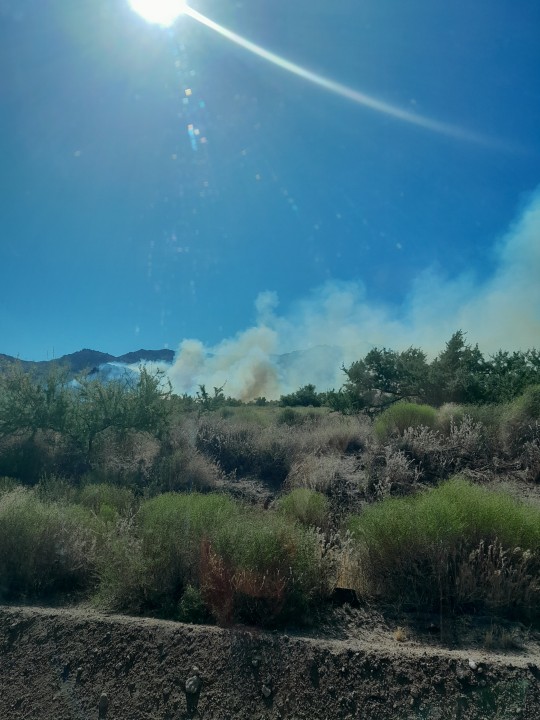
My first night here was certainly not what I was used to back home, but it was far from anything uncomfortable. We first walked around the property, where she showed me all her various plants, trees, and adobe structures she’s built previously. She then showed me to a camper on the corner of the farm where I would be staying for the time being, I set a couple of bags in there, and we headed inside to talk. That first evening was spent primarily getting to know each other; we told a few stories, had a bite to eat, and even cracked open an IPA. Afterwards, she gave me a quick lecture, which I have still not forgotten, about the potential dangers from wildlife. There are mountain lions and bobcats in the area, and we occasionally see coyotes in the property, but neither pose any real threat to people. There are also snakes and scorpions which are much more worrisome, although most species are not venomous. Finally, there are spiders, which are the worst of all. Only two species of spider here are venomous, Black Widows and Brown Recluses, but all species are deserving of death and extinction. After that, I returned to my camper and spent my first night in this new state.
My first few days here were also quite uneventful. Though there is much work to be done on this farm, Christine was very accommodating and wanted me to work on the sorts of things which interested me the most. So, after a few days of getting to know her, the property, and the type of work to be done, we decided to build a shed out of lumber and a cob-lime mix. Unfortunately, we did very limited work towards this during the first month or so of my stay, as I made the super tactical move of arriving just as the heat wave was commencing. Not deterred, we found random small tasks to do inside the house and the garage, or else we’d work a few hours in the morning and evening. This went on for nearly a month, but it has passed, and I seriously doubt we’ll see that sort of heat again until next summer. And once this heat wave did pass, work on the shed went by much faster. We are now almost done framing the entire thing, and will soon commence the adobe work. I’m excited to see this project advance, and though I will probably not see it completed, it will definitely be rewarding to see my work add up to something substantial and useful. I’ll also do my best to share some before and after pictures in case anyone is interested.
There is one night which I feel I must mention. It was my fifth or sixth night here, work had been finished for the day, and I headed inside to shower; so far, so good. I first went inside the camper to grab a few things, and, by pure coincidence, I happened to see a black spider sitting on its web near one of my bags. Reluctantly, I killed it and headed for my awaiting shower. Once there, I turned the light on, as one does, and I noticed what is without a shadow of a doubt one of the biggest spiders I’ve ever seen outside of a glass cage. Once more, I summoned every ounce of willpower I could muster and blasted the creature with a sandal slap powerful enough to kill a god. Having finished the deed, I finally step in to take my well deserved shower and notice something move at my feet. I then crouched down to take a closer look, and lo and behold it’s a bloody scorpion. Yes, it was very small, but at this point I hardly cared anymore. I finished my shower, grabbed a bug bomb from the garage, and set it off inside the camper, as that seemed the only way, short of a bottle of whiskey, that I could reasonably fall asleep without much worry. This worked out fine for about two more weeks, until it inevitably happened again. I walked into the camper, late at night, and with only my phone flashlight to see. As I’m getting ready for bed, I reached for a lamp sitting behind my pillow, and as I did so my hand went straight through a spider web, disturbing the very much alive spider sleeping there. The fiend touched my hand, causing a nearly incalculable acceleration backwards. It was then, in this moment of fear and hesitation that I realized a fundamental, unwavering truth about myself. That is, that there exists no confined space big enough for myself and a live, roaming spider; in each such case, at least one of us must die. As I stood there, panting and furiously waving my flashlight around, I was overcome with a murderous rage that would have made Hannibal seem tame by comparison. I searched for a weapon, then for my adversary, I spoke some words which should not be typed, and I sent him to the shadow realm. Henceforth, any spider I see will be assumed to be a comrade of the one who ambushed my sleeping quarters, and be treated accordingly. After that little incident, I set up my tent just outside the camper, and I continue sleeping there to this day.
I would also like to mention the few people I’ve met during my time here. This will be quick as there are only three. First was Penny. She’s one of Christine’s friends, a retired single woman who lives by herself on a nearby lot. I don’t have much to say about her, other than she is kind, laid back, and likes to smoke weed. In fact, the third sentence I heard her say, after greeting Christine and I, was “I’m hella stoned.” Then there is Jason. Also one of Christine’s friends and a retired carpenter. He was here to share some advice with us on building the shed, and stayed for a beer afterwards. We had a nice conversation where he shared some of his stories, and I some of mine. Ultimately, he came off as someone who was content with life, quite intelligent, respectful, and even funny at times. Finally, there was Melinda. She was also a volunteer who joined us for about three weeks. She was an interesting personality to be around; Prone to random fits of laughter, impulsivity, some rather unsafe working methods, nonsensical occurrences, and believing most of what she heard provided the person saying it claimed to know what they were talking about. Despite that, she was most often fun to be around and we even made the time to go on two outings to the lake.
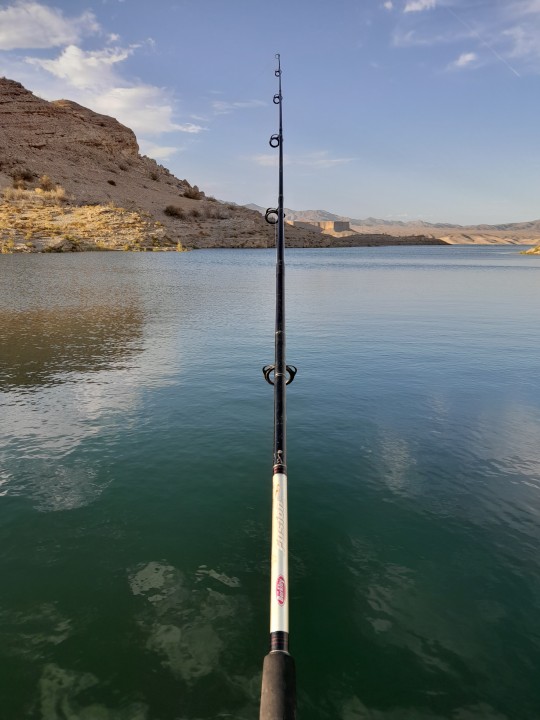
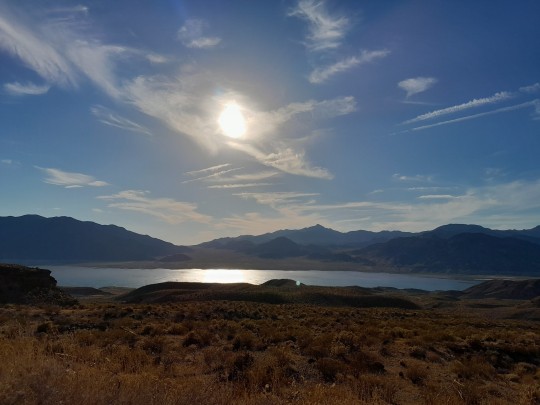
Initially I, of course, had some doubts about whether leaving my house, my job, family, etc. for a volunteer program was a good idea, but I can now say with confidence that it was. It is generally fun or entertaining, I’m learning much, and I have not been this stress free in quite some time. I truly did not realize just how simple and easy it could be to change my life so drastically for the better. If anything, I feel a bit disappointed that I have not taken more advantage of my new opportunities. The change in setting gave me the opportunities to focus more on my health, both physical and mental, on my formal studies, and on my personal studies and writing projects, yet I have worked very little towards any of those. I am making some progress though, however slight; it’s taken a few weeks, and will presumably take even longer, to shake some of my bad habits.
Like I mentioned earlier, I have been meaning to write for weeks, but have put it off each time for one reason or another. The catalyst that finally made me decide to sit down and type was a simple dinnertime exchange. Christine and I had cooked our dinner quite a bit late into the night, both of us were tired, and neither of us fully sober. So, as one can imagine, we burnt some portions a good deal. We talked as we absentmindedly ate, when she turned to me and said “This is a good meal!” “Yes, it is.” I agreed, without actually thinking about it. I then thought about it for a moment and realized I hadn’t lied, it actually was a good meal. To be sure, it was far from the best, but I most certainly enjoyed cooking and eating with a friend; years have passed since the last time I did so.
It’s now Monday morning. I felt too tired to finish writing last night and instead laid in my tent for a while before sleeping, listening to music, and gazing at the stars with absolutely no stress in mind. This morning I awoke just as the sun began to peer over the mountains, resumed my music, had a smoke, and watched the quail babies run behind their parents. Thus begins another good day.
-Rose

P.S. This is rocket.
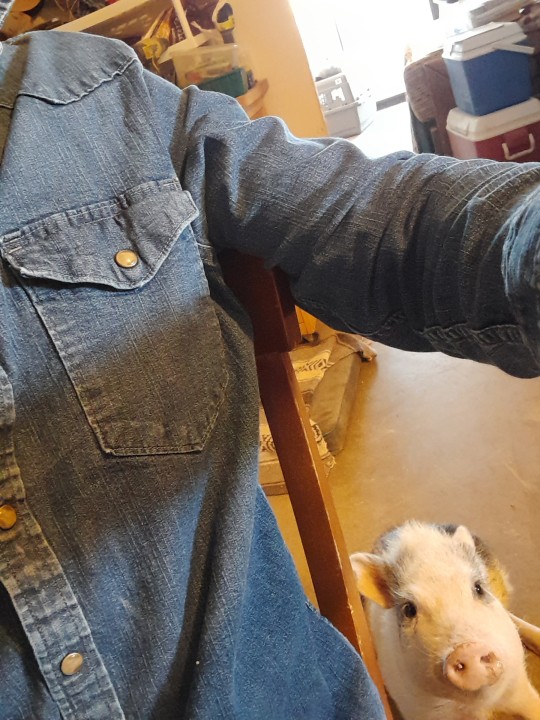
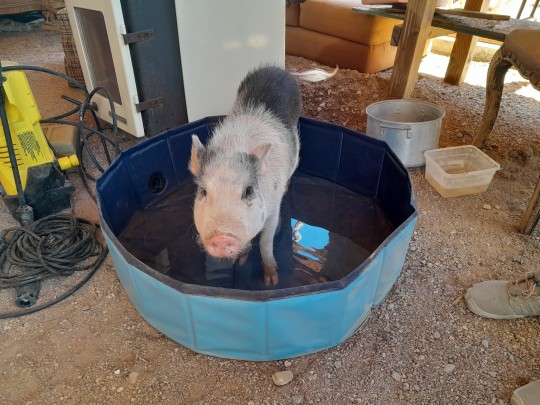
2 notes
·
View notes
Note
What are your favorite kinds of bugs?
honestly so many. i love bugs. i was that kid. i spent my dogs digging in mud and looking under rocks and climbing through bushes just to see what bugs i could find. it's honestly a miracle i have never been bitten by some venomous insect or anything. i would catch them and keep them in little jar terrariums and i have a little bug collection somewhere. i grew butterflies. i had ant farms.
and that's my answer. ants.
ants have always been my favorite bug. i mean, i love all kinds of bugs but ants have always been my most favorite. i just think they're neat and how almost human-like they are. how they are social and organized in colonies and specialize and farm and have wars and stuff. they're just so unique in that regard. like, i know there are a few other insects who are eusocial like that but ants are just the ones i was more exposed to growing up and i also just think they look cool and stuff.
plus, i was also very into ancient greek mythology back then and i was very fascinated by the myrmidons. and so i think that had a lot to do with my perspective of ants as just this fiercely loyal and strong and dauntless. also i just have a thing for systems and social organization and complexity in general and ants scratch that itch really good.
so yeah. i like a lot of bugs. i like fireflies and butterflies and stag beetles and bees (for many of the same reasons that i like ants) and spiders and centipedes and scorpions and cicadas and dragonflies and many many more.
but ants will always have a special place in my heart.
4 notes
·
View notes
Text

More lore of A’s Devil Fruit, Mythical Zoan, Model: Manticore, and its chimerical birthplace, Island of Chryseus 🌙

Island Made of Gold
At the threshold of New World, shrouded in salt air and protective incantations, drifts a fabled island of Chryseus (Island Made of Gold), known in legends for its veridian valleys, bountiful harvests and inexhaustible riches.
Those who have heard the tales of the golden island and embarked on a voyage to see it for themselves, however, beg to differ – this plot of land has nothing to do with its generous descriptions from the hearsay: liquid gold doesn’t flow in the aqueducts, the citizens’ prosperity isn’t glaringly evident, the island’s agriculture is thriving, but that’s the way it goes on most islands.
What sets the difference between Chryseus and the rest of the islands, even the most peculiar ones, is the plentitude of bizarre statues embellishing every square, street, alley, and residency. Stones and metals, coagulated in shapes of all sorts of demonic, brutish, disimpassioned, primordial, even benevolent creatures stand guard of each corner of the island.
And that’s when a benighted traveller comes up with a delusional sense that Chryseus isn’t made up of a metaphorical gold after all. The precious jewels and metals must be stashed in these terrifying statues, the contents of just one could probably provide him with unheard of riches for the rest of his life. An unfortunate traveller reaches for the etched creature, a feeling of unease descends upon his shoulders and soaks into his skin as soon as his fingertips brush the cold surface of the idol. Before he can discern what happened between the moment he touched the statue and the next, the thief’s chest reverberates with a sharp pang, he can no longer feel his extremities as venom from an enormous scorpion sting spreads across his entire body.
The deafening roar is the last thing he’s capable of hearing, when an amber-maned beast with unsettling human features, that seemingly materialised out of thin air, sinks his teeth into the thief’s paralysed flesh.

Sentinel on the wreckage
A tragic fate meets those who in their heart deemed that Chryseus’s possessions would make them wealthier. An ill intention of disrupting the island’s way of living or taking away from its citizens results in the perpetrator’s encounter with Manticore, the vengeful guardian spirit of the legendary island. Many millennials ago, Chryseus lived up to its epithet of Island Made Of Gold, its wealth overflowed, trade and culture flourished. The folk worshipped countless gods and spirits, carving marble sculptures in their honour. Alas, soon the island’s allies discovered that despite boundless resources it has to offer, Chryseus citizens are barely capable of protecting themselves against a large number of enemies. The island suffered from relentless attacks and pillages more and more often, soon its golden halls were torn down and sold out, the fruitful soil bled dry by the fiends.
A selfless hero, whose name lapsed into oblivion, sacrificed himself to preserve the last remaining evidence of Chryseus’s mythology and heritage in the form of defaced sculptures and feeble scrolls. The hero’s wrath towards the fiends who destroyed his home, conflated with the last heartfelt prayer to the spirits manifested in the birth of the brutish Manticore, an abysmal beast with a body of lion, gigantic wings of an eagle and a monstrous scorpion sting. An amber mane frames a beastly face with glowing golden eyes. For a fleeting moment, Manticore’s targets could witness an eerie humanity about the beast’s face. Perhaps, these were the traces of the deceased hero’s soul exposing themselves to the beast’s victims before they let out their last breath.
As the centuries marched on, Chryseus quietly recovered from its ruin. The Island Made Of Gold was no more, instead its citizens resorted to farming as their means of survival. The formerly glorious trade was conducted through trusted third parties. Until decades ago, Chryseus banners flew neither on trade ships nor at summits.
Hoping for their civilization’s restoration, the citizens carved more statues of the island’s spirits and guardian beasts, although due to the sparse resources, new statues seemed to immortalise disfigured monsters, as opposed to benevolent spirits. Manticore’s spirit now stood in the centre of the island’s pantheon, as the loyal aegis, celebrated by the recently tormented folk.
Incantations and protective spells cast during the decades of merciless onslaught on the island made the salt breeze waft around the suffering plot of land, rendering it practically invisible to the ships passing by. Every now and again, Chryseus reveals itself to weary souls in need of rest, or to those marked by fate to carry on Manticore’s legacy. Peculiarly, log poses malfunction or even spontaneously shatter into pieces in the proximity to the island.
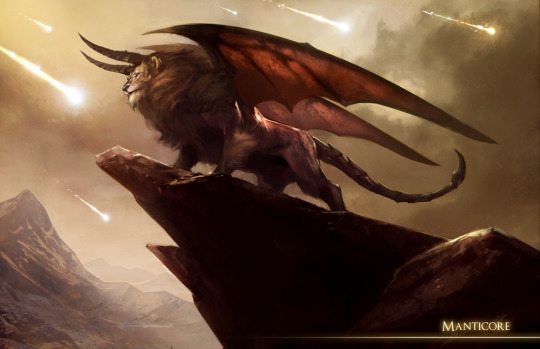
Artwork by JNickBlack

The Sacred Covenant
A mighty and dreadful spirit, alas, is still capable of fading away. In order for Manticore to continue existing, it must merge with a human and establish a firm bond with its vessel. The reasons for the vessel selection remain unknown, however the legends claim that the spirit can sense the souls that most remind it of the hero’s soul from which Manticore manifested. The spirits populating Chryseus cannot enter a human body even with the host’s permission but they can possess a range of objects, and even food. When its former vessel passes away, Manticore must possess a fruit grown on Chryseus soil.
A new host then must consume the possessed Devil Fruit and let their soul merge with the spirit. The cycle continuation can be delayed for months or a year before Manticore senses and leads a potential host to the island. But the cycle can be broken as well: if the host is killed while in Manticore form, the spirit perishes along with them without a chance of restoration and Chryseus loses its steadfast sentinel.

The Beast’s Burden
Once the possessed Devil Fruit has been consumed, the current Manticore bearer must assume their duties as the island’s protector. Whether they want to disclose their new role to the rest of the islanders is up to them.
Manticore bearers obtain the ability to transform into the beast and can utilise its supernatural strength in order to punish the transgressors.
The chosen soul’s spiritual attunement becomes extremely refined: they can sense and communicate with the spirits and ghosts, hints about the bearer’s future can be revealed in dreams and visions.
The Zoan user can also access the spirit’s memories, and look for the answers in the past. The Manticore bearer must keep an eye on the island’s frenetic paranormal activity, pacifying the restless ghosts if required.
It is impossible for the possessed devil fruit user to enter a hybrid form until they’ve connected with the spirit properly through many hours of meditation, training and fasting.
Curiously, they are capable of achieving Manticore’s monster point, the form when all humanity is erased from its user, and the beast’s primordial wrath is unleashed. Although the monster point demonstrates extraordinary destructive force, it rapidly drains the user’s energy which causes them to recover for days after having resorted to such extreme transformation.
The spirit’s vessel must operate on a cline between their human, hybrid, Manticore and monster forms.

Thank you for reading 💖
4 notes
·
View notes
Text
Warriors Rewrite: The Matter of Barley and His Siblings
I took another page out of @bonefall’s book and made Barley two separate characters: Barley Senior (the father; friend of Bluestar’s) and Barley Junior (the son; Ravenpaw’s cowboy husband). This is a brief summary of the events of their family before Into the Wild starts.
So like in canon, Barley (Jr) and his siblings grew up in BloodClan, now called The Coven of Blood in this rewrite (that’ll be covered in a different post). Their mother was a cat named Coral who lived in the Coven’s territory, although she herself wasn't part of their ranks. One day while close to the border, she encountered an outsider tom sneaking into the city. She apprehended him and instead of being frightened, he was friendly and cordial, introducing himself as Barley. He was attempting to visit his mother, who lived within the city. Against her better judgement, Coral allowed him to enter. He started visiting the city regularly after that, just now it wasn't only to see his mother. Barley and Coral would sit and talk for hours, with him telling her stories of life on his farm and about the wild cats who lived in the forest who really weren't as bad as the city cats were told they were. Soon the two had developed romantic feelings toward each other and Coral became pregnant.
Their happiness couldn't last forever, though: they were found out soon after Coral had four kits: Hop, Jump, Tulip, and Barley Junior. Barley Senior was violently driven away by Brick, while Coral and their kits were forcibly brought to live in “the Capital” (the area in the center of the city where the Coven’s higher-ups and Scourge lived) with Bone, who as it turned out was Barley Senior’s estranged younger brother. The kits were immediately given proper Coven names: Barley Junior became Crusher, Tulip became Venom, Hop became Scorpion, and Jump became Snake. As soon as the kits were weaned, Coral was driven off for breaking a Commandment (she got off VERY lightly given her circumstances) and none of her kits ever saw her again after that.
The four were primarily raised by their Uncle Bone and were brought up to become Gladiators and members of The Coven in the future. While Scorpion and Snake thrived in that life, Venom and Crusher didn’t. No matter what Bone tried, nothing could hide the fact that the two were weak bleeding hearts that couldn't harm a fly. Unable to function in The Coven’s violent society and wanting to meet their biological father, Venom and Crusher fled into the forest one night and never looked back. It took awhile to find the farm- having grown up in the city, they didn't know what a “farm” even was and the forest cats they met were... less than helpful.
“Excuse me! Hi! Can you help us? We’re looking for our dad, he lives on something called a farm but we don't know what that is so we were wondering if you might-”
“YOU’RE TRESPASSING ON CLAN TERRITORY!!! GO AWAY!!!”
“SORRY! SORRY! PLEASE DON’T HURT US!”
They lucked out when they encountered Bluestar going on a walk to clear their head. Upon noting that the two bore a strong resemblance to (or in Crusher’s case, looked completely identical to) her old loner friend, she brought the two to the farm and they were finally reunited with their dad. Barley Senior was overjoyed that his kits were still alive, although he was deeply saddened by the fate of his former mate and his two other sons. Crusher and Venom ditched the Coven names and took back their own: Crusher chose to become Barley Junior again and live in the barn with his father, while Venom preferred to live in the farmer’s house as a kittypet and was named Violet by the farmer and his wife, which she happily accepted as her new name.
And that’s their backstory as of Into the Wild!
3 notes
·
View notes
Text
Oof yeah. I grew up rural, and there are a lot of things I miss about it now that I'm in the city, but it's so much easier to be poor and disabled where the bus runs more than twice a week and closer than two winding, hilly, sidewalk-free walking hours of narrow and pothole-riddled roads from the gate. And just so we're clear, I was remarkably close to the twice a week bus stop. I've never seen the bus that supposedly stops there in my life. If I needed to leave town for, say, work or groceries or college classes, either I got a lift with family to the next nearest bus stop, sixteen minutes away if the freeway wasn't closed, or I. You know. Didn't go.
I wasn't farming but I did raise a lot of small livestock as a kid and teen for 4-H-not much else to keep kids out of trouble, and when you've got nothing going for you except space you may as well do something with it. You don't just wander around barefoot out there. there's biting insects, there's venomous snakes, there's scorpions, there's nails, there's gravel, there's pointy plant debris, there's animal leavings of all sorts. I wandered around barefoot a lot anyway (the neurodivergent stubbornness and shoe aversion, probably, making me prefer the pain of hot dirt, literal snow, and sharp things to the pain of foot jail) and I have some entertaining scars on my feet, and I'm pretty lucky that's the worst I have, frankly. I was a dumb kid making dumb mistakes and I am definitely still prone to them, but you know where I wear shoes now so I don't immediately get stabbed in the feet by a vengeful god of the earth and/or my own hubris? Even if it's only flip flops? My parents' yard. Editing to clarify: I grew up in the rural portion of a large and diverse county on the west coast of the USA. We were up in the forested mountains, it wasn't exactly miles of farmland in every direction grade rural. so i was close enough that fifteen or so minutes of driving would get you to the local reservation's main(i think only) bus stop location, which was the last stop on that route's line, served by a bus once an hour or so during running hours. It was a three hour, three transfer trip to my college. I do realize that I was astonishingly close to accessible public transit.

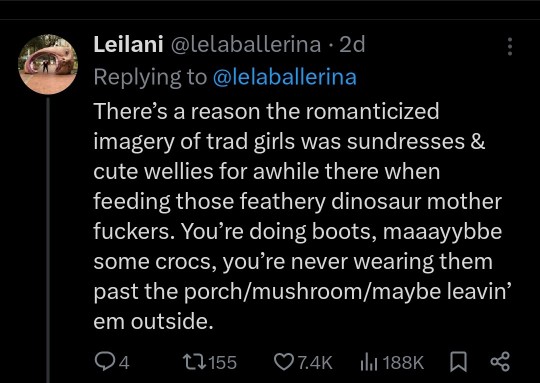

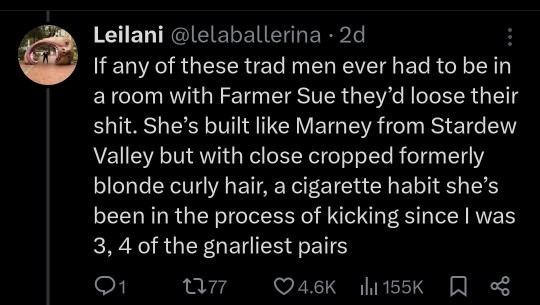
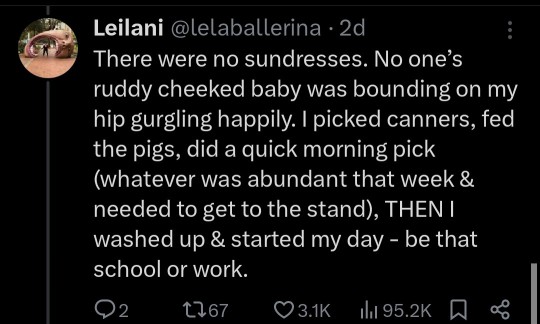
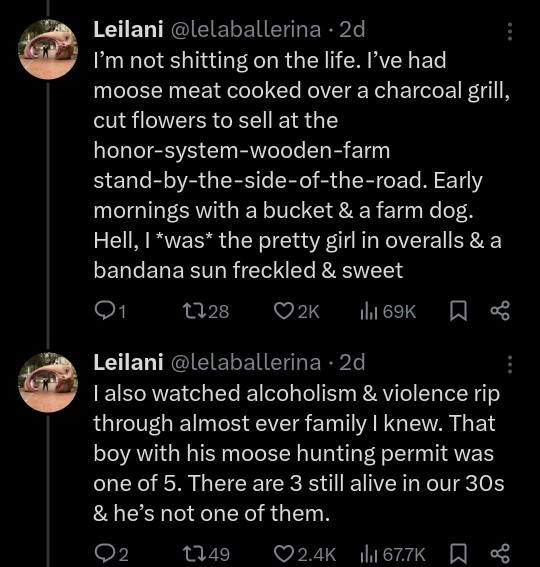
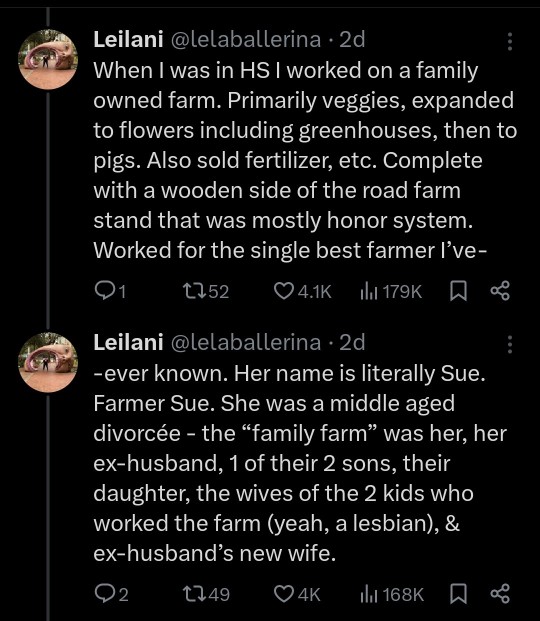
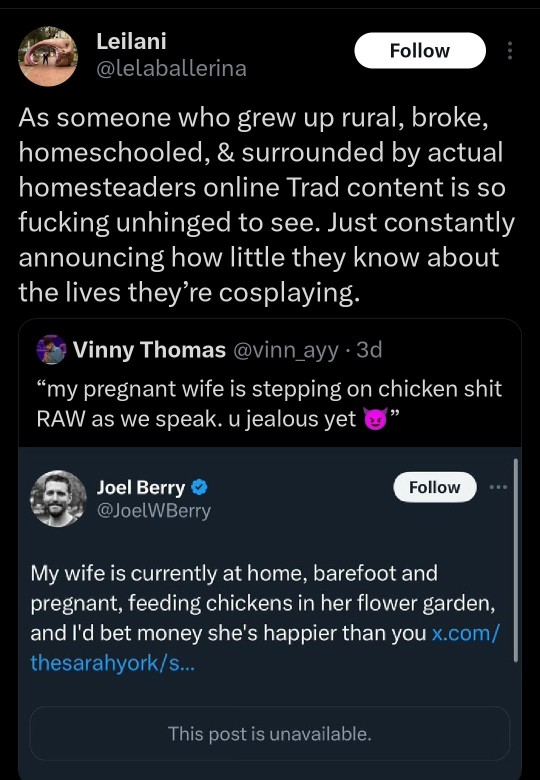
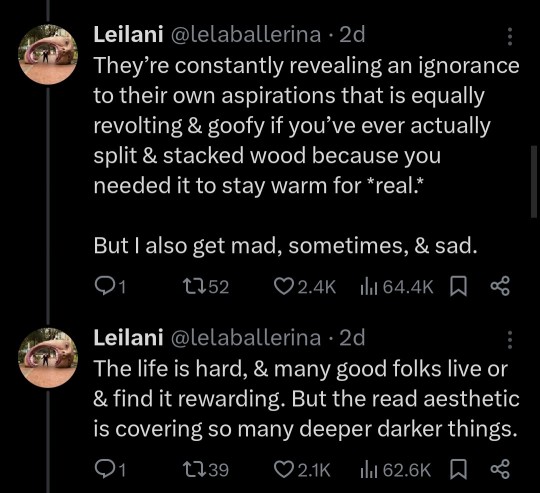
27K notes
·
View notes
Video
youtube
Amazing Scorpion Farming in China For Venom and Food - Scorpion Harvesti...#HTML
0 notes
Text
Snakebite Shield: Market Trends in Anti-Venom Solutions
The anti venom market is defined as the market for pharmaceutical products used to treat snake, spider or scorpion envenomations (snake bites). Anti venom drugs are serum-derived pharmaceutical products used to neutralize the toxicity of venom in cases of venomous snake, spider, or scorpion bites. Anti venom serums are biologics manufactured through pharmaceutical approaches. They are extracted from the horse or sheep that has been injected with non-lethal doses of snake venom. The resultant antibodies present in the blood serum of the injected animal can counteract and neutralize the effects of venom when given to envenomed humans or animals. The increasing frequency of venomous snake and scorpion bites has led to a greater emphasis on developing effective anti venom treatments, thereby driving market growth.
The Global anti venom market is estimated to be valued at US$ 9229.16 Mn in 2024 and is expected to exhibit a CAGR of 6.7% over the forecast period 2023 to 2030. Key Takeaways Key players operating in the anti venom market are Bharat Serums and Vaccines Limited (BSV), Boehringer Ingelheim International GmbH, Boston Scientific Corporation, CSL Limited, Haffkine Bio-Pharmaceutical Corporation Limited, Incepta Pharmaceuticals Limited, Merck & Co. Inc., Merck KGaA, MicroPharm Limited, Pfizer Inc., and Rare Disease Therapeutics Inc. These players are focusing on expanding their geographical presence and product offerings through strategic partnerships and acquisitions to maintain their leading positions in the market. The rising incidence of snake and other venomous animal bites globally presents significant opportunities for players in the anti venom market. As per the WHO, around 5.4 million snakebites occur each year, resulting in approximately 2.7 million cases of envenomings and around 138,000 deaths. Developing regions such as Asia Pacific, Latin America and Africa account for the majority of global snakebite cases due to agricultural practices, climatic conditions and lack of healthcare access in rural areas. Globally, companies are focusing on expanding their presence in emerging markets to meet the growing demand from countries such as India, Brazil, South Africa and Australia which report high rates of snakebite incidences. Manufacturers are also engaging in collaborations with regional venom suppliers, research institutes and healthcare providers to strengthen their supply chains and product access in these regions. Market Drivers One of the major drivers for the anti venom market is the increasing prevalence of snake and scorpion bites globally, especially in developing regions. It is estimated that around 5 million people experience snakebites each year according to the World Health Organization (WHO). Countries such as India, Brazil, Nigeria, Mexico and Afghanistan report high rates of snakebite cases attributable to climatic conditions favoring snakes and lack of access to healthcare in rural areas. The increasing agricultural and construction activities in rural regions also lead to greater interaction between snakes and humans, resulting in more envenomings. Market Restraints The major restraint for the anti venom market is the high costs associated with anti venom production. Since anti venom drugs are mostly serum derived pharmaceuticals, their production requires maintaining large farms of venomous snakes and horses or other animals to produce anti venom antibodies. This makes the manufacturing process very expensive and resource intensive. Additionally, variations in snake venom composition across geographic regions also necessitate development and clinical testing of region-specific anti venoms further adding to R&D costs. Strict regulations for ensuring the safety, efficacy and purity of anti venoms also contribute to high production costs. These factors make anti venoms unaffordable for populations in developing countries where they are needed the most.
Segment Analysis The Anti-Venom Market is dominated by the snake anti-venom segment which holds a market share of more than 60%. Snake bites account for a majority of venomous bites across the world, especially in Asia, Africa and Latin America. The higher prevalence of snake bites and the severity of envenoming caused by snake venom makes snake anti-venom the most prescribed treatment. Within snake anti-venom, the vials for polyspecific anti-venom continue to be the top-selling sub-segment due to their effectiveness against multiple snake species. Global Analysis Regionally, the Asia Pacific anti-venom market accounted for the largest share of more than 35% of the global market in 2023. Higher prevalence of snake bites and scorpion stings in countries such as India and Southeast Asian countries is a major factor driving market growth. Additionally, lack of advanced healthcare infrastructure in rural regions increases the demand for anti-venoms for treating venomous bites. North America is projected to witness the fastest growth during the forecast period owing to ongoing research and development of advanced anti-venoms for treating rare venomous bites. Key players are also focusing on expanding their operations in emerging markets of Latin America and Africa to tap into new revenue sources.
0 notes
Text
GodofWar Punisher WarMachine FutureWinterSoldier MolagBal Sauron
God of War Weapons List. Main Feature Versatile List of Specialty Weapons that prove the Most Leverage in Battle
1. Crucible Sword of the DOOMSLAYER
2. Dual-wield with the Crucible Sword: The Pendellum Axe Gun
3. Glaive
4. Chinese Sword that looks like a Straight Katana cuz that Dynasty shared its Designs with Japan.
5. Indian Scimitar of Ghengis Khan
6. Daggertail (Hashshashins Aka Hashshansins Aka Hassansins Aka Grasseaters Aka Original Assassins of Persia). Aka Scorpion's (Razor) Chain Spear.
[Requires Level 7 Security Clearance. Data entry Redacted. TO BE CONTINUED.]
7. God of War - War Machines, Vehicles, Ammo types, Technology, Tactical Gadgets, Defenses, Uncommon Offense, Other Armaments & Provisions, All Warfare and Strategies
1. Rorschach's Journal: Mission Report - December 16, 1991. Remember Remember the 7th of November. Today... A Naked Snake died. Actually, ehem, Redacted. A Stark Snake died. Moscow has lit up like the 4th Floor of Ju-On. It's Chernobyl times 3,572,855... Completely Incalculable. 2. Case File - Guns of the Patriots, and Super-Scarab METAL GEAR Programs, the Engines have been ignited, the Gears of the Train rolling, the Beast shall Roar again. Venom Snake commands Armaments Manufacturers as Director, and Applied Science Advisor & Lead Strategist demonstrating through Simulation how the Armaments of Engineers should perform in the Field. We must remind everyone he is not a Lab Rat, He is BIG BOSS!! What tha fuck does this scrawny guy know!? Hammer Industries? What... You gonna hit em with the Ex-Wife? New Protocol - We will use Iron Man as the Warzone Pin Cushion. 3. .... [BIG BOSS]... These Armament Programs are Perfect, in that they offer An Invasion Force the Most Effective and Efficient Methods of Conquering the Enemy Nation. Considering much Roots from The Art of War, I BIG BOSS apply Originality to All my Arsenal and Tactics. It is most dangerous when a General is completely Unprecedented and uses shit you've never seen. I am Ninja Sennin. I'm a Mind Freak. The first Tactic and Weapon I will use on the Defending Army is Psychological Warfare. To Shock, Traumatize, and Horrify the Enemy. Most especially Terrify the Enemy. But I would say Terror should only be used as the Cherry on Top of the Cake... After you have successfully Conquered their Mind Fortress, then Unleash True Petrifying Panic & Despair upon THEM... 4. .... BIG BOSS... I am very Creative, and very Clever. When I Manufacture Armaments, I Aim to Test the Imaginations of the Enemy. Then again, I let y'all in on a little secret... Most Effective Tactics are actually quite Simple and Savage. Savage as in the Nature of our Ids. Many People with Honor and Dignity, Decorated Generals!!... Don't have the Stomach for True Effective Warfare. This Warfare comes straight from The Red Lantern Corps of MARS. It is everyone's Destiny to undergo the Crucibles of Nirvana, and come Full Circle with One's Self. WAR... Is when We get to UNLEASH OUR INNER DEMONS. .... BIG BOSS... I am Demon Snake. HE IS... THE DOOMSLAYER. Question - How do you DESTROY your Enemy? You see, the End Game of War... Is how do you Aim to Destroy your Enemy. My Methods are Ultimately Flexible in that they consider All the Different Ways you'd like to End your Enemy. Most especially the Ultimate Outcomes: To Convert them into Allies, To Trap their Country in a Hellheim Realm to Torture them for Eternity, To Convert All their Dead into Zombies, To Slaughter and Devour them all for the sake of Cannibal Meat and Nutrition, To Enslave them all FOR DARKSEID, To Lett them all in Fatty Blood Farms for Vampires and probably piss off a lot of Gods in the process, To convert the Elderly into Human Vegetation and Feed the Earth their Bluud, To Let All the Enemy Live yet only to Completely RUIN their Precious Land and Shelters and Purge All their Data and Leave them with a
#atriox#red pyramid thing#evil within#the elder scrolls#lord of the rings#metal gear phantom pain#x force#deadpool#iron man#god of war ragnarok#Doom Eternal#ares god of war#death metal#darth plagueis#venom comics#professor moriarty#terminator#silent hill#gears of war#dead space#teenage mutant ninja turtles
0 notes